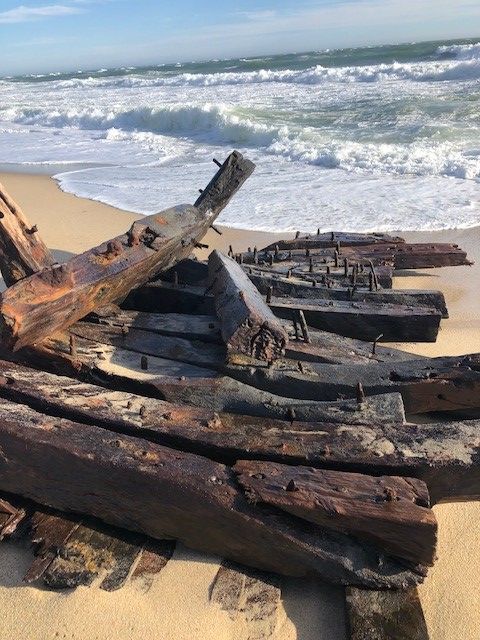Wrecks
Nantucket is famous, or I should say infamous, for the wrecks around its shore and upon its shoals. Graveyard of the Atlantic is a more than fair moniker. I’ve done my share of research into the US Lifesaving Service and the Humane Society over the years. Living on an island and being a historian, I am always curious and learning, how could I not? (Though you may only associated me with Maria, the Mitchells and Nantucket women.)
So the other day, I finally trudged out to take a look at the wreck portions that they now believe are the Warren Sawyer which was wrecked along the south shore in 1884. While it was very warm for February, I, of course, chose the windiest day and brought my 8-year old son along as I thought he may not have such an opportunity again. We trudged, my glasses became covered in salt spray, and we both wished we had brought an entire box of tissues. However, that wind, even though it was only gusting to maybe 40 MPH out of the west, gave you a small impression of what it would have been like for a ship wrecked along Nantucket. But we had the benefit of being on land, in warm winter coats, and with the sun shining. It was not blowing seventy-five, pitch black, and we were not freezing and soaked to the bone in fear of washing over board, a mile off shore or laying just along the shore.
For me, that’s what I try and do. While I marvel at the craftsmanship and point out the “pins” and ship’s knee to my son, I think about the people and what they went through on the Warren Sawyer and what they all went through during all those many wrecks. The fear, the cold, the wet, the wind, and the absolutely mind-blowing place of being (many, but not all times) in sight of flickering lights on land or the fuzzy view of houses in the distance and perhaps, hopefully, people trying to come to your aid from the shore. Perhaps that is why one of my favorite paintings, though a sad one and one that garnered some controversy at the time it was exhibited, is Winslow Homer’s “The Lifeline” (oil on canvas, 1884). As an aside, note it was painted the same year as the Sawyer was lost. I love Homer’s work and this piece illustrates the dangerous job of a US Lifesaving Service member rescuing a woman from a shipwreck in a breeches buoy. I could put my art history cap on to explain the controversy but sometimes delving too much “ruins” the image and I just want you to think about the harrowing task and the brave people who were lifesavers; the people who were terrified and hopefully rescued, and those who were terrified and perished. Thankfully, all on the Sawyer were rescued.
Our shores are the losts’ graveyard. Remember them when you look out across the water when calm or stormy.
JNLF
Recent Posts





